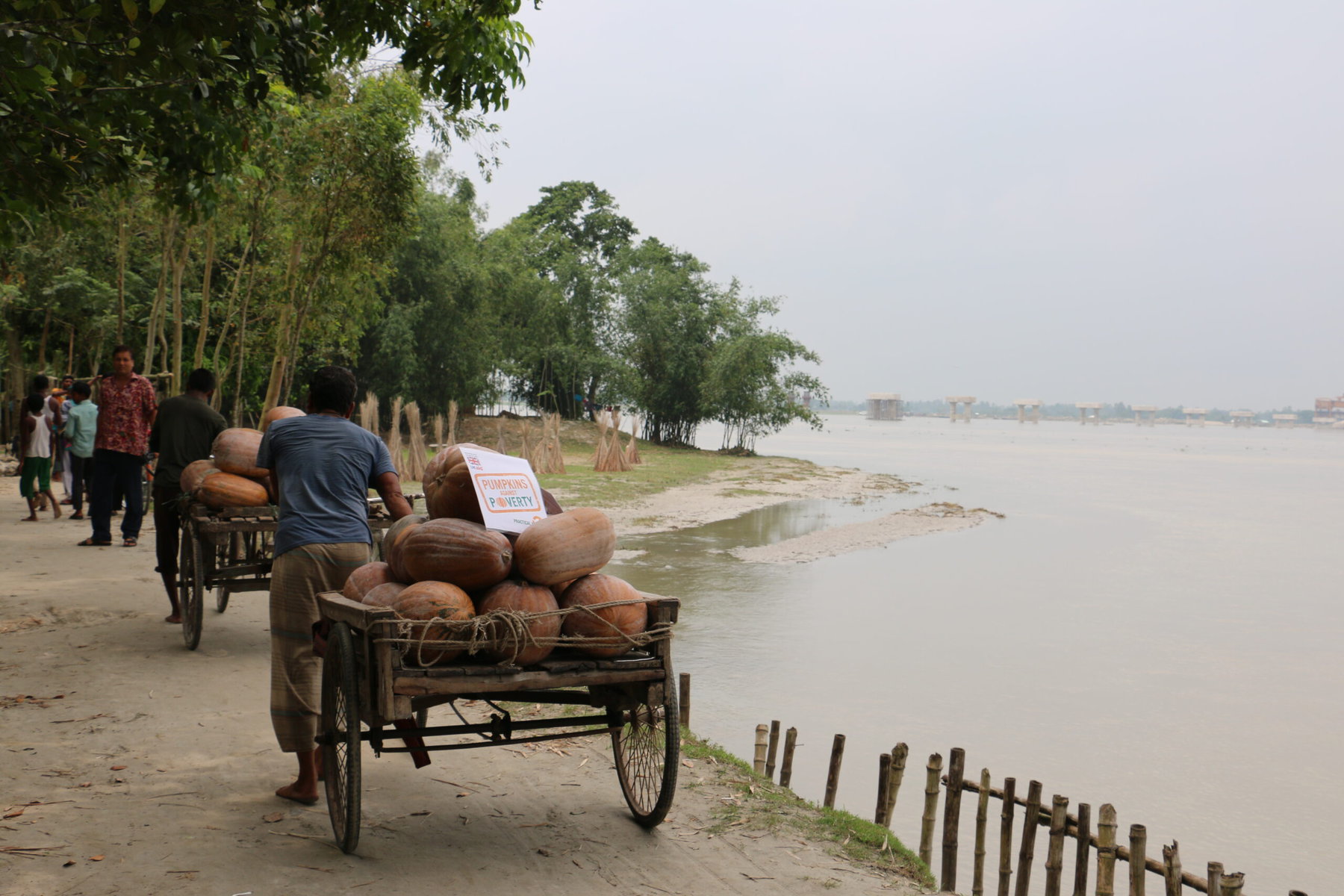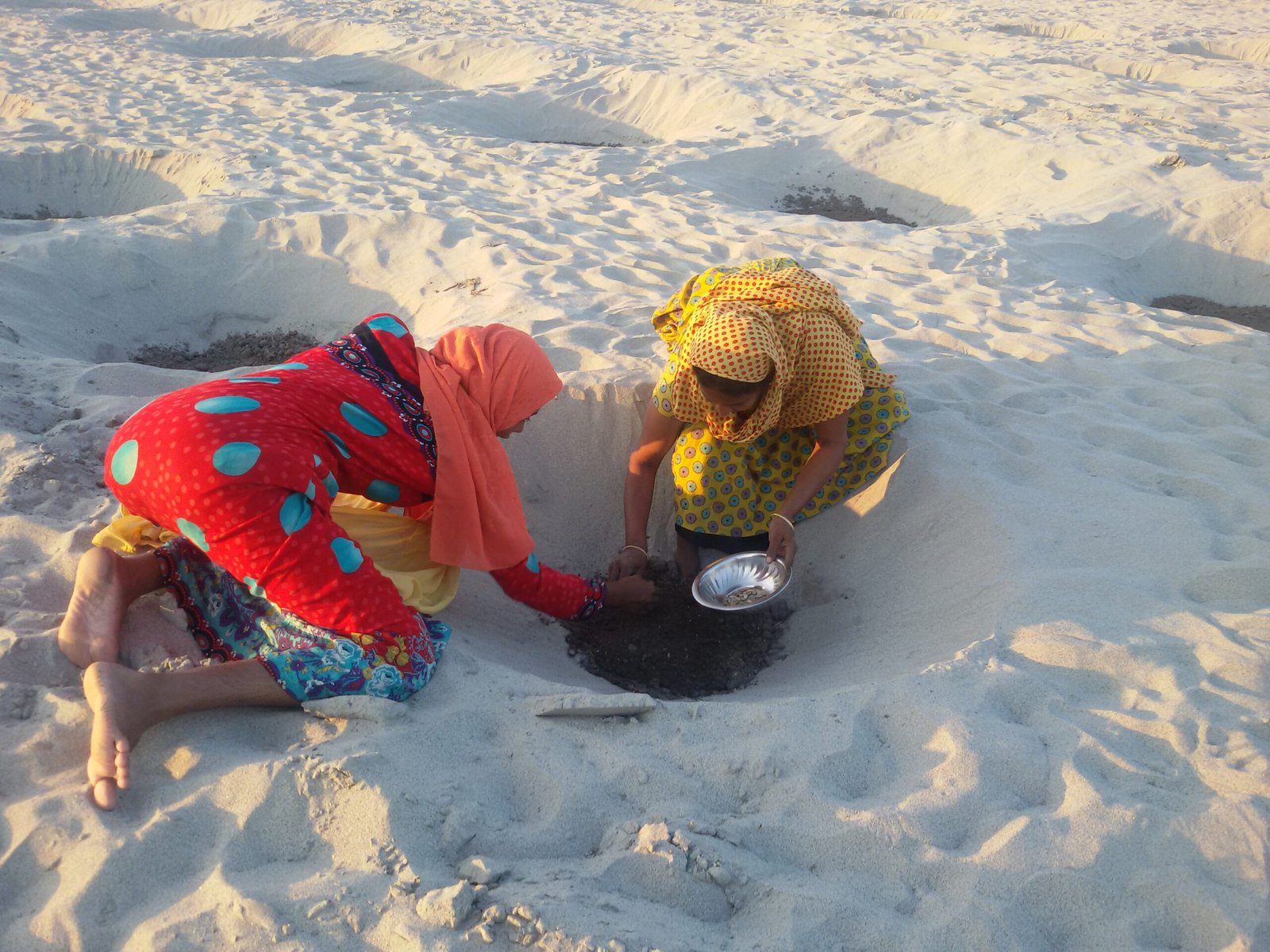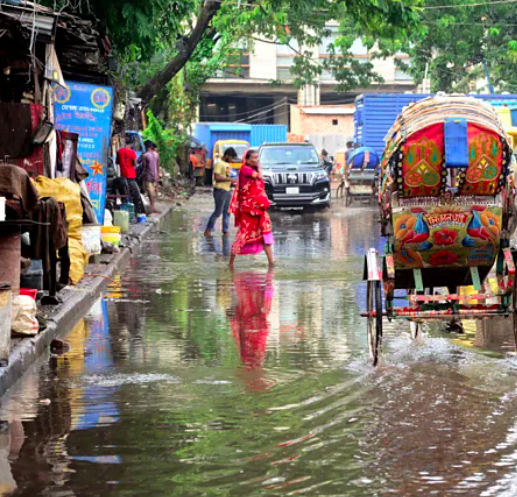

Waterline is an ongoing series that explores the solutions making rivers, waterways and ocean food chains healthier. It is funded by a grant from the Walton Family Foundation.
In Bangladesh, river flooding is a fact of life — and it creates islands of floodplain sediments known as chars. Around five percent of the country’s area consists of these transitional lands, which form on the banks of rivers due to flooding or a change in course of the rivers.
Such lands on the banks of the three main rivers — Brahmaputra, Padma (the local name for the Ganges in Bangladesh) and the Meghna — are inhabited by poor, vulnerable communities who have been displaced from their homes and who desperately need a way to earn a livelihood. A farming technique known as sandbar cropping, which was developed in 2005, has been a boon to these displaced communities, providing them with a supplemental income.
Recent research reveals that in 2014 to 2015, sandbar cultivation enabled the production of 10.31 metric tons of pumpkins per hectare of land previously considered useless. As of 2020, it was estimated that sandbar cropping was being used on 4,500 hectares.
Pumpkins Against Poverty, a project started by the charity Practical Action as a United States Agency for International Development (USAID) innovation experiment, has now grown into a full-fledged profitable enterprise known as Pumpkin Plus. Nazmul Islam Chowdhury, founder and CEO of the organization, is proud of what Pumpkin Plus has achieved. “Through sandbar cropping, we are slowly transforming traditional agriculture into an agribusiness system,” Chowdury says. He notes that Bangladesh designated sandbar cropping a national policy in agriculture in 2018 and that the technique has been officially approved by the prime minister as a new agriculture technology.
Now, this project is operational in several regions of transitional lands in Bangladesh and is successfully cultivating not only pumpkin but various other crops as well. “There are several crops that we are now producing in the sandbar system: potatoes, maize, groundnuts, sunflower seeds and Napier grass for livestock feed. We have even tested a series of high-value crops and vegetables,” Chowdhury explains.
While pumpkins were found to be a lucrative option earlier in the project, now gourds, squashes and melons are showing promise, too. It has already been successfully proven that other crops can be grown through sandbar cropping. Dr. Rajendra Uprety, a former employee of the government of Nepal who founded an organization called Agri-green Nepal Foundation, says that in Nepal, watermelons grow very well using sandbar cropping, as do cucumbers, bottle gourds and other members of the gourd family, such as zucchini.

To plant in sandbars, small pits are dug in the loamy soil, where manure, germination soil and seeds are placed together. This helps the seeds germinate even if the percentage of fertile silt in the sand is low. The seeds require consistent monitoring for a while to make sure they are well-irrigated and nursed when needed. Where the groundwater is low, jute sacks are used in the pit to keep the seeds moist for longer.
According to Dr. Gaurav Talukdar, a postdoctoral researcher from the University of Kansas who is extensively researching sandbars, sandbars’ constitution varies depending on where they are located. “The morphology of rivers is different from each other,” he explains, “resulting in a different sand-silt-clay ratio within each of their deposited sediments.”
Weighed down by negative news?
Our smart, bright, weekly newsletter is the uplift you’ve been looking for.For his research, Dr. Talukdar has collected several samples from different rivers and notes that not all sandbars are cultivable. He cautions that to determine the suitability of a sandbar for cultivation requires a lot of analysis. “Based on samples we collected from one meter below the ground level, we found that newly developed sandbars don’t have much potential,” he says. The sandbars in the Kansas River, he has found, are not cultivable, but they do have a lot of flora and fauna activity. In Nepal, on the other hand, the sandbars of the Kamala River are extremely fertile — but wild boars and nilgai (antelope) are attracted to the crops, requiring farmers to be vigilant at all times.

All rivers transport sediments, some more and some less depending on where they flow from, how quickly they flow and what sort of path they take. As a river flows, sediments move with the water when the flow is faster and get deposited when the river’s pace is slower. For this reason, sandbars are not constant. In tropical countries such as Bangladesh, sandbars usually form during the monsoon, when there’s excess water in the rivers, and then surface during the winters as the water subsides. This makes them ideal for homeless, landless people who can then depend on these lands for food security.
Because of their transient nature, farming on sandbars follows a strategic approach. As Dr. Uprety describes, “In Nepal, several [such] projects start after monsoon when the sandbars surface. Usually, only one crop is grown at a time. The cropping period for winter crops starts in November and ends in March. After that, the summer starts and it may be possible to grow one more crop before the monsoon returns.” He says that the farmers he has encountered in the Terai region of Nepal are land-poor people who will use one sandbar for cultivation this year and will move on to another sandbar the next.
When I shared that I had not come across many riverbed farming projects in the Indian subcontinent other than the ones in Bangladesh and a handful in Nepal, Dr. Uprety noted that the transience of such projects makes them hard to track: “Many of these projects have such a short duration and occur at [such] a local level that the farming cycle is complete even before it is noticed, let alone written about in media.” He is confident, though, that this method is being practiced in the fertile Ganges river area, which carries loads of fertile sediments as it flows down from the hills. Talukdar too sees immense potential in the Ganges river system, provided the farming is done sustainably. Through his work, he is helping farmers to get optimal yields, which he finds can only be attained through intercropping. “If a farmer has 10 hectares of land, monocropping is not a smart idea. An unexpected natural calamity could wipe out his entire potential income,” says Talukdar.
In Bangladesh, monocropping of pumpkins has worked well so far — each individual has been able to earn $7,700 US for his family over a period of five months through the export sales of the crops they grow. In Nepal, a farmer growing watermelons could earn $2,000 US for three months of work. In addition to running their homes, this has allowed these farmers to send their children to school.

In a world where natural disasters are becoming more frequent, sandbar cropping can help overcome seasonal food shortages and meet the demands of an increasing population. And in addition to providing a financial benefit for poor communities while ensuring a steady supply of crops, this technique also provides environmental benefits through its more sustainable land use and reduced erosion.
As Dr. Talukdar puts it, “At a time when urbanization is covering all agricultural land and most green fields are covered by industries, we have to continue to research solutions and find alternatives to build supply to meet an increasing demand.”

